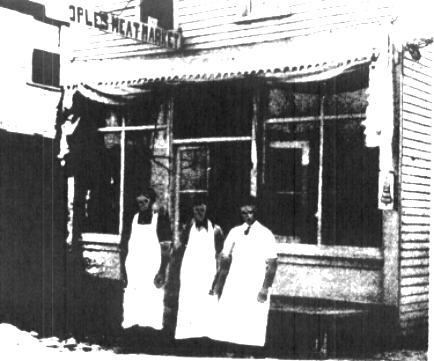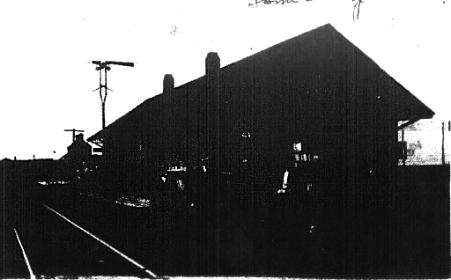
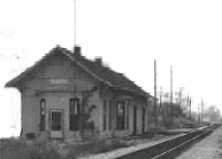
RAILROADS
When a railroad was built between Oconto and Underbill a depot was con ted on the north end of Main Street.


(Page 16)
By 1904 the
railroads extended from the northern lumber camps to Pulaski and Green
Bay, and Gillett became and important junction. At one timne there were
five log runs through Gillett everyday in addition to several fright and
passenger trains.
There was apopulation boom following the completion of the railroads. Businesses grew and new industries were introduced. Among the early railroad men are Gust Cook, Tom Skelly, Otto Frankow, Bob Schmidt, Jack Saubert, Leo Sebach, Charlie Thompson, Jim Forel, and Peter Schroeder.
The railroad and its men left an indelible mark on Gillett's history. Railroad men married settler's daughters and started new businesses. Young people immigrated to the rapidly developing community bringing with then new ideas. All of these families were to become a heritage of the railroad year.
(Page 17)
(Ernst Barkman second form left)
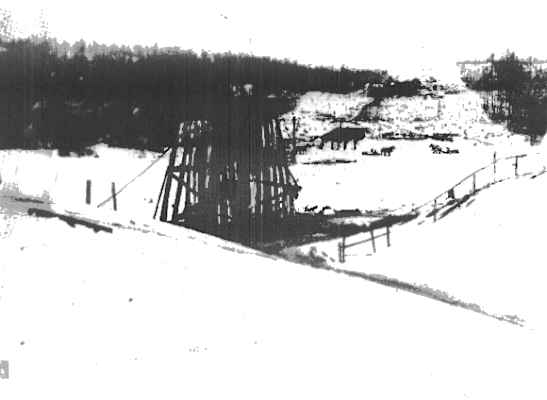
Construction of railroad bridge over Oconto River on
county highway BB in late 1800's
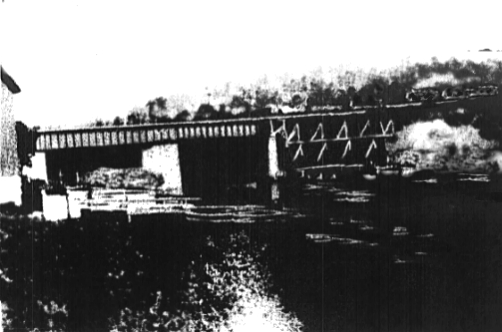
(Page 18)
The first United States Post Office was established
in 1870 in the residence of Rodney Glllett, with Mr. Gillett as official
postmaster. Mrs. Gillett handled the mail and did the other work that was
necessary. This arrangement itinued for 14 years.
The first telephone company was started in 1910 by the farmers in the area and was known as the Gillett Rural Telephone Company. Mr. L. B. Stuelke was the first president and P. Schardt was vice-president and secretary. The office was located upstairs over Pedersons Meat Market. (CESA office.) Later Art Sack became the manager, and the switch boards were moved to his home so that night services could be offered. The Gillett Rural Telephone Company was later purchased by General Telephone Company of Wisconsin.
In 1926 the citizens of the village approved a bond issue for the construction of a sewage disposal plant and the Installation of sewer and water mains. The improvement was not without a tragedy. While the ditch was being dug on Main Street in front of Dr. Hicks home the sides collapsed, pinning and burying a workman. His fellow workers tried frantically to free him but were unable to save his life.
After the installation of sewer and water pipes had been completed on Main street, curb and gutter were built and the two business blocks were paved. The completion of the work warranted a big celebration - a street dance with two orchestras providing the music. More than one pair of shoes were completely worn out that night.
In 1948 garbage collection services were offered, with each resident pay-tag for the service if he wanted it. This was not a satisfactory arrangement so soon a regular garbage collection service was inaugerated and provision made in the budget for it.
In 1944, Gillett was incorporated and Chartered as a City with Louis Zahn, Village President, becoming the first City Mayor. The community was divided into three wards and the mayor-aldermenic form of government adopted. For a while the city rented Dr. Baldwin's office for use as a city office and the Councill met in the old Village Hall. In 1953 a new city hall was erected on land that was part of the City Park. Shortly thereafter the old Village Hall was remodeled and renamed the Municipal Building.
